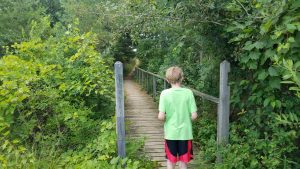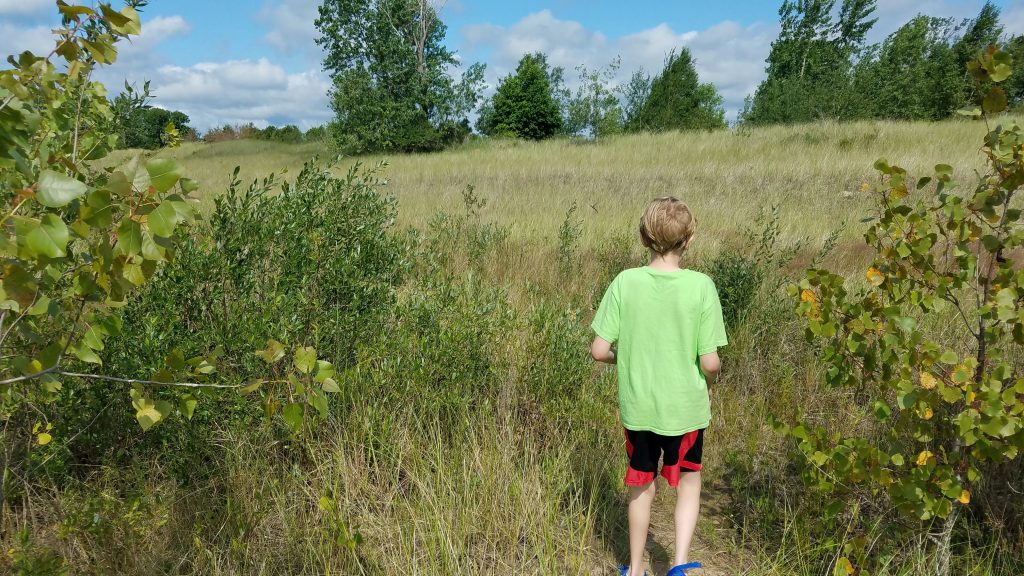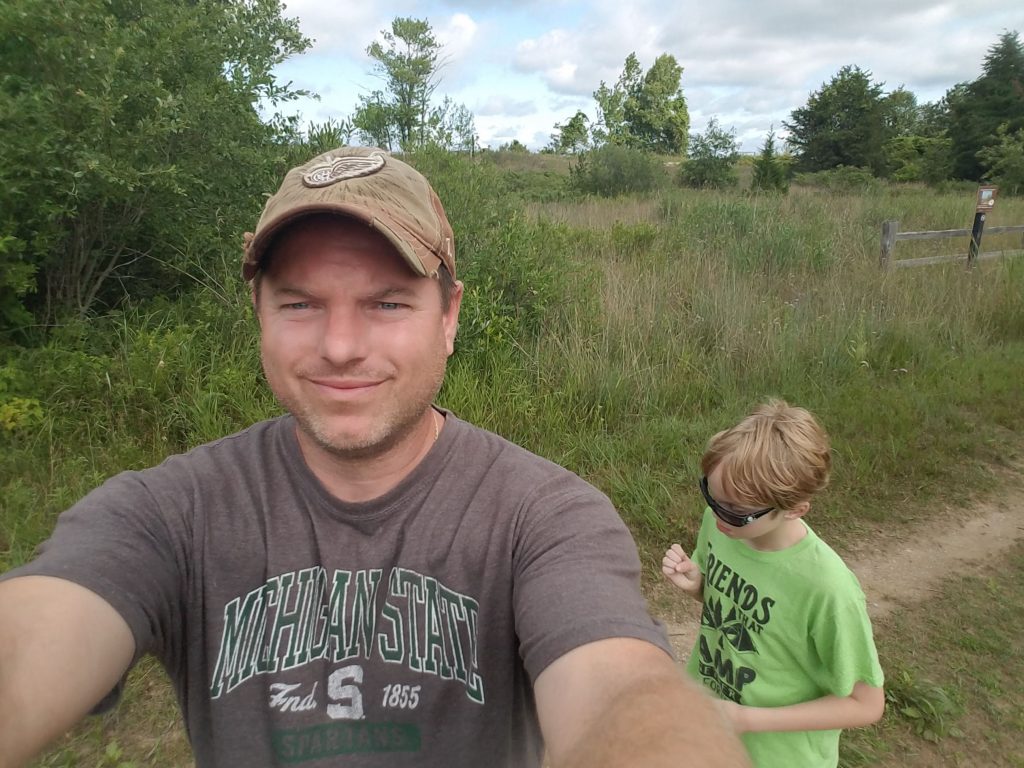 I’m an avid camper. I like all things outdoors. I love to hike, bike, kayak, fish, and you just cannot beat a day on the shores of our Great Lakes swimming. On a recent trip, I was wandering around hiking with my youngest son (8 years old) and when we went off the beaten path I pretended to be lost. No matter which way he tried to go we were deep in the thickets and every new pathway ended just as quick as we started down it. He was scared. He was frustrated. He was concerned that I wasn’t as worried about finding our way back as he was. He was in a panic and desperately trying to get back to our camper. It probably didn’t help that as we were wandering around I was telling him the timeless tales of vicious “snipes” that hide in the woods with teeth like a beaver, claws like a bear, and a tail that would rattle like a snake! (A snipe hunt is common camping joke)
I’m an avid camper. I like all things outdoors. I love to hike, bike, kayak, fish, and you just cannot beat a day on the shores of our Great Lakes swimming. On a recent trip, I was wandering around hiking with my youngest son (8 years old) and when we went off the beaten path I pretended to be lost. No matter which way he tried to go we were deep in the thickets and every new pathway ended just as quick as we started down it. He was scared. He was frustrated. He was concerned that I wasn’t as worried about finding our way back as he was. He was in a panic and desperately trying to get back to our camper. It probably didn’t help that as we were wandering around I was telling him the timeless tales of vicious “snipes” that hide in the woods with teeth like a beaver, claws like a bear, and a tail that would rattle like a snake! (A snipe hunt is common camping joke)

Of course we were not lost. I knew exactly where we needed to go and how to get back, but he had no clue because the pathway had ended. His attempts to find his way were not successful. The trail to get back wasn’t obvious to my son.
In some ways this is how a user feels using Moodle. Why? Because in many cases the Moodle Site Admin doesn’t make the pathway to complete a task clearly visible and discoverable for the user. In some cases it is Moodle that doesn’t have a clear way to complete a task. The site admin may know how to do things in Moodle but unless that translates to teachers and students knowing what to do, you are just like my story: wandering around in the LMS scared and frustrated on what the next click will bring!
 If you are an administrator of Moodle creating and defining these pathways to complete certain tasks is critical to helping staff and students feel comfortable in the LMS wilderness. We developed a strategy for how we wanted to implement Moodle in our K-12 environment. We wanted students to go from “login to learning” as quickly and efficiently as possible. Login to learning is more than a slogan or catchphrase. We use it to define much of the development and enhancements we built for Moodle. It is a recipe for how to implement Moodle and give the user a pathway to getting started in your LMS.
If you are an administrator of Moodle creating and defining these pathways to complete certain tasks is critical to helping staff and students feel comfortable in the LMS wilderness. We developed a strategy for how we wanted to implement Moodle in our K-12 environment. We wanted students to go from “login to learning” as quickly and efficiently as possible. Login to learning is more than a slogan or catchphrase. We use it to define much of the development and enhancements we built for Moodle. It is a recipe for how to implement Moodle and give the user a pathway to getting started in your LMS.
The pathway for a teacher was defined as going from login to the homepage, to creating a course, to building the course, and then accessing the course daily with students. We built these functions and defined this pathway with our Fordson theme. We created buttons and visual cues on the homepage to help a teacher find their way. This was our pathway. Maybe yours is different. It doesn’t really matter other than you define a pathway and make it obvious through design which way the user is to go. Less is more in this case because that is one less pathway for the user to try. Having less items on the homepage means they don’t have many options to get lost. We built Fordson for this reason.
The pathway for students was a bit more tricky. We wanted them to login and then enroll in a course or access their courses without leaving the homepage. This functionality doesn’t exist in core Moodle so we built an enrollment plugin. The Easy Enrollment plugin allows teachers to enroll students directly from the homepage with no searching or ways for a student to get lost. The teacher uses a secret enrollment code which is unique to their course. A student enters this enrollment code on the homepage and is instantly enrolled and viewing the course materials upon clicking the enrollment button. Using our analogy this is more like teleporting back to safety! It is the most direct and efficient way to get a student from login to learning.
The point of this article is to bring a focus to an area of critical importance in how to direct and guide your users on a pathway to create and then access the learning materials. Moodle out of the box doesn’t have a very clearly defined pathway. This article brushes over many of the other decisions and enhancements made once inside a course but you get the idea. Each new area requires making the desired tasks obvious to the end user.
Whether it is done from a theme, a plugin, or core functionality it is up to the site administrator to make the pathway for the user. Otherwise, your users will feel lost every time.
We have a recipe for success in the K-12 environment with Moodle, Fordson theme, and Easy Enrollment plugin. There are other settings that go into it but these are the basics.

Trackbacks/Pingbacks